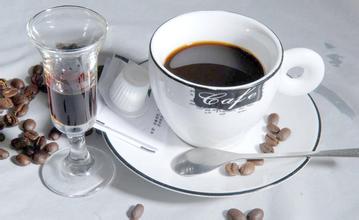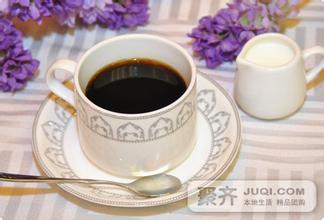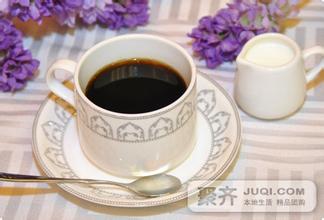Introduction to the characteristics of Hawaiian coffee flavor and taste manor with strong sour and sweet taste
The Hawaiian archipelago, formed by volcanic eruptions, consists of 8 large islands and 124 small islands stretching 2450 kilometers, forming a crescent island chain. Hawaii is the largest island and has two active volcanoes. The climate is mild and pleasant all year round, the precipitation is greatly affected by the terrain, and the difference between different places is great. The forest coverage rate is nearly 50%. Honshu is made up of nineteen major islands and coral reefs located in the central Pacific Ocean. The Bank of Hawaii calculates that tourist spending in Hawaii has a ripple effect of 2, meaning that every dollar spent by tourists adds $2 to total local output. Tourism revenue accounts for 60 percent of GDP, keeping Hawaii's economic growth rate consistently higher than the average for the United States economy. [1]
Because tourism plays an important role in Hawaii's economy, the state government attaches great importance to protecting the environment, protecting tourism resources, and paying attention to the development of "clean" industries, such as marine science, aquaculture, tropical agriculture, financial services, and commercial centers, in order to promote the development of tourism and promote economic development. Hawaiian air traffic is extremely important, and inter-island routes are mainly flown by two airlines: Hawaiian Airlines and Aloha Airlines. Honolulu International Airport-The state's most important aviation hub, most flights to and from Hawaii end there, with connections to other islands. There are also flights to major cities in Asia, such as Tokyo, Osaka, Nagoya, Seoul, Taipei, Sydney, Auckland, etc.
Many modern Hawaiians still believe that pillows are not to be stepped on or sat on. Men go fishing, family members can not ask him where, nor can they entertain guests during the man's absence, the sea can not bring accompanying bananas, otherwise it will be unlucky. Modern Hawaiian customs have been incorporated into the customs of peoples around the world. To Hawaiian home guests, first of all to take off shoes to enter, this habit is actually from the Japanese. In Hawaii, suits are worn only for weddings, courts and funerals, a compromise between Hawaiian and Western customs
Although Hawaii is often affected by tornadoes, the climate conditions are ideal for coffee growing. There is plenty of rain and sunshine here, and there is no worry about frost. In addition, there is a strange natural phenomenon called "free shade." On most days, around 2 p.m., white clouds appear in the sky, providing the coffee trees with the shade they need. In fact, it's these natural conditions that make Kona produce more Arabica coffee than any other plantation in the world, and it's always high quality, and the unique growth and climate make for a stronger coffee flavor. The best Kona coffees are divided into three categories: ExtraFancy, Fancy and NumberOne. This third-class coffee is produced both on the estate and under natural conditions. Most of the coffee marketed as "Kona" contains less than 5% real Hawaiian Kona coffee. Another good Hawaiian coffee can be found in the U.S. -Kai Farms, while Europeans discovered Hawaii by accident. They were originally looking for a legendary passage to the east to produce spices, but instead they found the richest pearl in the Pacific Ocean. A captain named James Cook landed at Kauai in 1778 to supply his ships. He encountered severe cold and storms on his way back, and had to return to Hawaii early the following year and anchor on a beach in Kona. Since then, the Hawaiian Islands have become important stopovers on the world trade routes. Hawaii's chiefs traded sandalwood, a native of the island, for weapons, goods and livestock with passing ships. Western religion began to spread widely on the island in the 1820s, and many churches built in that era are still in use today. Hawaii is also a paradise for drinking and buying coffee. Each island has several unique places for tourists and locals to taste and buy coffee, ranging from cozy shops to comprehensive coffee knowledge centers. The excellent quality of Kona coffee benefits from the right location and climate. Coffee trees grow on the slopes of volcanoes, and their geographical location ensures the altitude required for coffee growth; the dark volcanic ash soil provides the minerals needed for coffee growth; the climatic conditions are very suitable, and the sun gently passes through the air filled with moisture in the morning. In the afternoon, the mountains become more humid and foggy, and the clouds in the air are natural umbrellas for coffee trees. At night, they become clear and cool, but there is no frost. Natural conditions allow for high average yields of 2240 kg/ha compared to 600 - 900 kg/ha in Latin America

Important Notice :
前街咖啡 FrontStreet Coffee has moved to new addredd:
FrontStreet Coffee Address: 315,Donghua East Road,GuangZhou
Tel:020 38364473
- Prev

Strong taste of Sumatra Lindong Coffee Flavor and Taste introduction to Fine Coffee in Manor area
The western part of the mountain runs through the steep Barisan Mountains, stretching from northwest to southeast, stretching 1600 kilometers, with more than 90 volcanoes, of which the highest peak, Mount Kerinci, is 3800 meters above sea level. To the east of the mountains are alluvial plains, wide in the south and narrow in the north, with a widest point of more than 100 kilometers. There are many rivers, including the Moussi River, the Batanhari River, the Indra Jiri River, the Gamba River and so on.
- Next

Introduction to the characteristics of Hawaiian Kona Fine Coffee Flavor and Flavor Manor
The Hawaiian islands are formed by volcanic eruptions, including 8 large islands and 124 small islands, stretching for 2450 kilometers, forming a crescent-shaped island chain. Hawaii is the largest island, with two active volcanoes. The climate is mild and pleasant all the year round, the precipitation is greatly affected by the topography, there are great differences in different places, and the forest coverage rate is nearly 50%. Honshu is made up of nineteen major islands and coral reefs, located in the middle
Related
- Detailed explanation of Jadeite planting Land in Panamanian Jadeite Manor introduction to the grading system of Jadeite competitive bidding, Red bid, Green bid and Rose Summer
- Story of Coffee planting in Brenka region of Costa Rica Stonehenge Manor anaerobic heavy honey treatment of flavor mouth
- What's on the barrel of Blue Mountain Coffee beans?
- Can American coffee also pull flowers? How to use hot American style to pull out a good-looking pattern?
- Can you make a cold extract with coffee beans? What is the right proportion for cold-extracted coffee formula?
- Indonesian PWN Gold Mandrine Coffee Origin Features Flavor How to Chong? Mandolin coffee is American.
- A brief introduction to the flavor characteristics of Brazilian yellow bourbon coffee beans
- What is the effect of different water quality on the flavor of cold-extracted coffee? What kind of water is best for brewing coffee?
- Why do you think of Rose Summer whenever you mention Panamanian coffee?
- Introduction to the characteristics of authentic blue mountain coffee bean producing areas? What is the CIB Coffee Authority in Jamaica?

